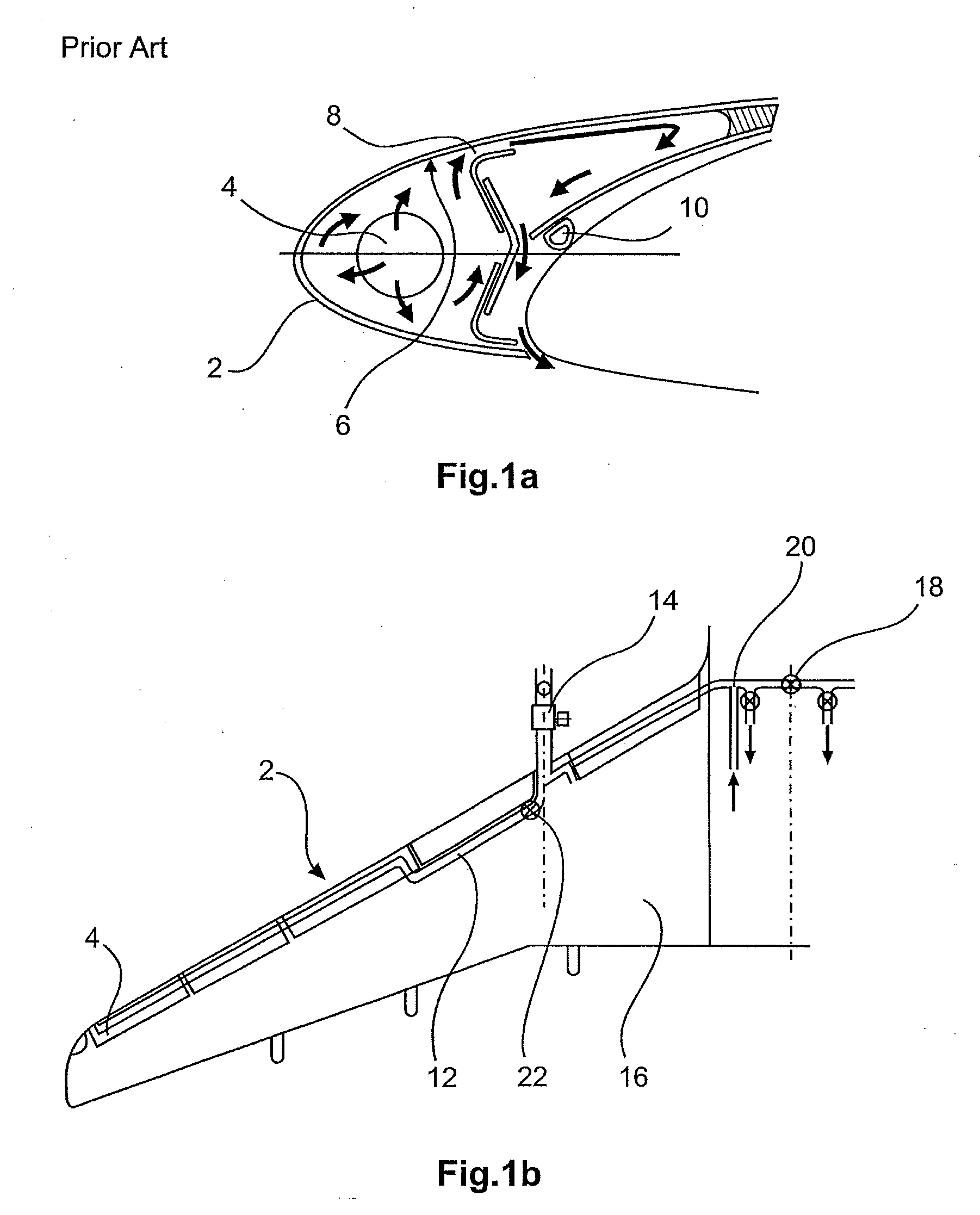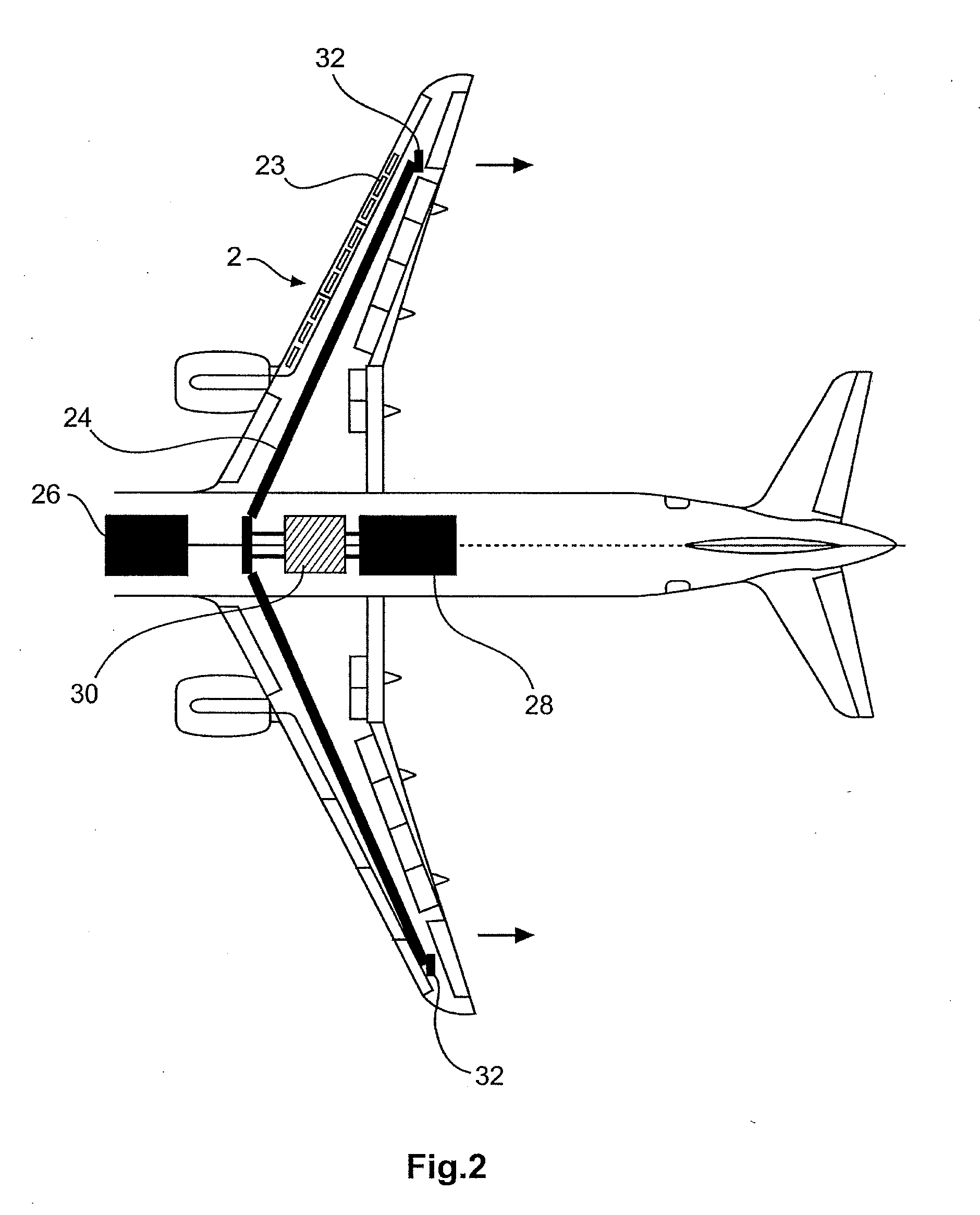De-icing system for an aircraft
a technology for aircraft and ice, which is applied in the direction of air-flow influencers, transportation and packaging, energy-efficient board measures, etc., can solve the problems of increasing the weight of the respective aircraft, affecting the flight safety of the aircraft, and the engine needs to make available bleed air and/or electric current, so as to reduce the number of cabin air outflow valves
- Summary
- Abstract
- Description
- Claims
- Application Information
AI Technical Summary
Benefits of technology
Problems solved by technology
Method used
Image
Examples
Embodiment Construction
FIG. 1a schematically shows a widely used system for de-icing in aircraft wing according to the prior art. A perforated pipeline 4 (also referred to as “Piccolo tube”) is situated in a leading wing edge 2, wherein warm air is discharged from said pipeline toward the inner side 6 of the leading wing edge 2 in order to prevent an ice accumulation thereon due to the input of heat. In the example shown in FIG. 1a, the leading wing edge 2 consists of the leading edge of a leading wing edge flap (also referred to as “slat”). Within this leading wing edge flap, the warm air discharged toward the leading edge 2 can also flow into regions that are situated further toward the rear referred to the direction of flight and further toward the upper side of the wing and thusly keep mating seals 10 free of ice. If the warm air is discharged tangentially, the outflow is preferably realized behind the separation layer.
FIG. 1b elucidates the correlation between the perforated pipelines 4 and an air so...
PUM
 Login to View More
Login to View More Abstract
Description
Claims
Application Information
 Login to View More
Login to View More - R&D
- Intellectual Property
- Life Sciences
- Materials
- Tech Scout
- Unparalleled Data Quality
- Higher Quality Content
- 60% Fewer Hallucinations
Browse by: Latest US Patents, China's latest patents, Technical Efficacy Thesaurus, Application Domain, Technology Topic, Popular Technical Reports.
© 2025 PatSnap. All rights reserved.Legal|Privacy policy|Modern Slavery Act Transparency Statement|Sitemap|About US| Contact US: help@patsnap.com



